ACROBiosystems – Targets of TME pathways
SIGNALING PATHWAYSBACKGROUNDHOT TARGETSPRODUCT FEATURESPRODUCT LISTASSAY DATA
SIGNALING PATHWAYS
BACKGROUND
According to the data from The Global Cancer Observatory (GCO), cancer is now one of the most serious diseases worldwide with around 20 million new cases and nearly 9.6 million deaths. In addition to a wide range of genetic and epigenetic alterations, components of the tumor microenvironment have a major impact on tumor progression. The tumor microenvironment (TME) is the environment around tumor, including the surrounding blood vessels, immune cells, fibroblasts, signaling molecules and the extracellular matrix (ECM). These cellular and non-cellular components of TME can reprogram the processes of tumor occurrence and development by regulating different cascade signaling pathways. Therefore, understanding the underlying cellular and molecular mechanisms governing these interactions can be used as a novel strategy to disrupt cancer development and contribute to the development of efficient and safe therapeutic strategies to fight cancer.
Nowadays, the TME becomes a hot area for antibody drug development and cancer treatment. ACROBiosystems have developed a series of TME related targets, such as TGF-β, Notch, etc., helping for cancer treatment and fast your R&D procedure.
Related Page: Introduction of ACROBiosystems
HOT TARGETS
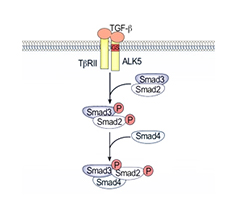 |
TGF-β FEATURE >Cytokines with pleiotropic biological activities >Promote angiogenesis and migration in TME >Inhibit immune system by regulating the function of immune cell groups in the TME Clik to see TGF-β related products |
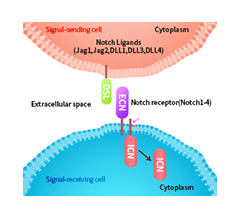 |
Notch FEATURE >Regulate the cell differentiation, apoptosis, proliferation and cell boundary formation >High expression in malignant tumors >Interact with FGF and Wnt signaling pathways, maintain cancer stem cell (CSC) growth and reshape the TME Clik to see Notch related products |
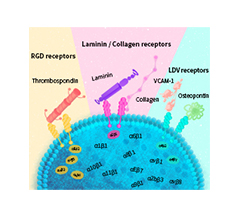 |
Integrin FEATURE >Cell adhesion molecules >Cell adhesion receptor with the function of signal transduction >Have a crucial role in tumor angiogenesis, progression, and metastasis Click to aquire more information about Integrin |
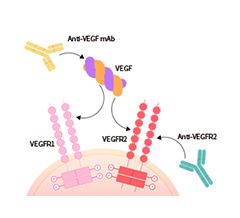 |
VEGF FEATURE >A potent angiogenic factor >Play a crucial role in promoting angiogenesis and regeneration >Have some other multiple functions such as immune regulation and neuroprotection Click to aquire more information about VEGF |
PRODUCTS FEATURES
-
・Various tags and species could be chose
-
・High purity verified by MALS
-
・High bioactivity verified by SPR/BLI/ELISA/FACS etc.
PRODUCT LIST
Click on the molecule to find some details
Targets of Integrin signaling pathways
Targets of TGF-β signaling pathways
Targets of Notch signaling pathways
Targets of VEGF signaling pathways
Targets of other important signaling pathways
ASSAY DATA
High purity——MALS verified
DLL3 (DL3-H52H4)
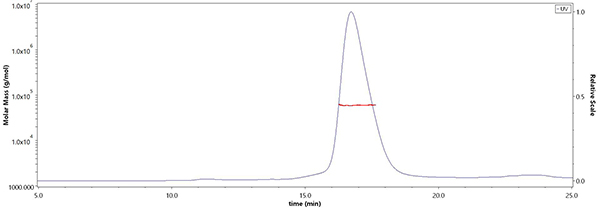
The purity of Human DLL3, His Tag(Cat. No. DL3-H52H4) was more than 95% and the molecular weight of this protein is around 55-65 kDa verified by SEC-MALS.
High bioactivity
>ELISA
TGF-beta (TG1-H4212)
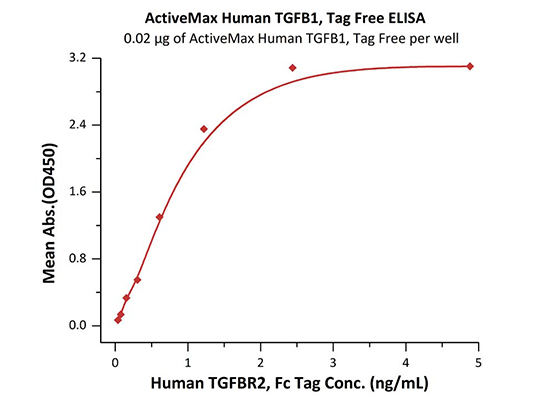
Immobilized ActiveMax® Human TGFB1, Tag Free (Cat. No. TG1-H4212) at 0.2 μg/mL (100 μL/well) can bind Human TGFBR2, Fc Tag (Cat. No. TG2-H5252) with a linear range of 0.08-1 ng/mL (QC tested).
|
>BLI |
>SPR |
|
NOTCH2 (NO2-H5255) |
HGF R (MET-H5256) |
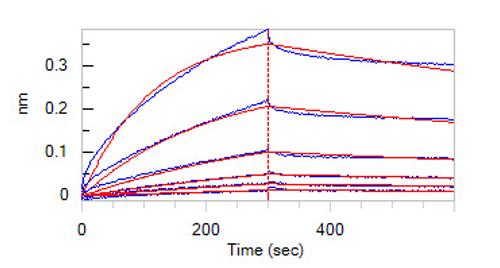 |
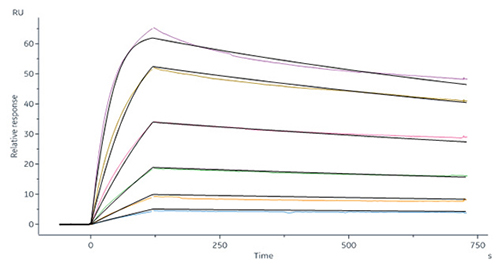 |
|
Loaded Human NOTCH2, Fc Tag (Cat. No. NO2-H5255) on Protein A Biosensor, can bind Human DLL4, His Tag (Cat. No. DL4-H5227) with an affinity constant of 77.6 nM as determined in BLI assay (ForteBio Octet Red96e) (Routinely tested). |
Human HGF R Protein, Fc Tag (Cat. No. MET-H5256) captured on CM5 chip via Anti-human IgG Fc antibodies surface can bind Human HGF Protein, His Tag (Cat. No. HGF-H52H3) with an affinity constant of 75.2 pM as determined in a SPR assay (Biacore 8K) (QC tested). |
Related Article: How TGF-β controls the tumor microenvironment
Please contact us for any inquiries, questions, or information requests.
Tokyo Future Style, Inc.
info@tokyofuturestyle.com
TEL:029-851-9222 FAX:029-851-9220


